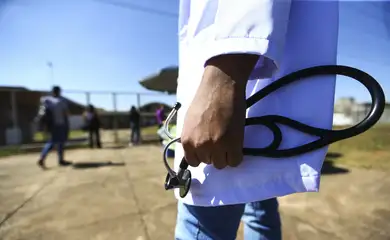Study uncovers discrepancy between population, number of doctors

A study by the University of São Paulo Medical School (FMUSP) and the Brazilian Medical Association (AMB) shows there is a discrepancy between population growth and the number of doctors, in addition to poor regional distribution of professionals, concentration in a few state capitals, and insufficient and unequal distribution of specialists.

According to the updated Medical Demography in Brazil 2023, the country has 1.58 specialist medics per 1 thousand citizens, considering professionals with degrees in at least one of the 55 recognized medical specialties.
The survey found unequal distribution between states across all specialties, with some concentrated in just a few states, as is the case with surgeons. In Pará, for instance, there are 0.46 surgeons per 100 thousand people—six times less than in the Federal District (60.84).
The number of anesthesiologists in Maranhão (4.4 per 100 thousand) is five times lower than in Rio de Janeiro (22.54 per 100 thousand). The national average under family and community medicine—one of the specialties in primary care—is only 5.54 per 100 thousand, and 15 states are below it.
According to University of São Paulo Professor Mário Scheffer, who coordinated the study, Brazil is home to 545 thousand physicians. Of these, however, 192,600—nearly 40 percent—are generalists, doctors with no medical specialty. “These are physicians who graduate and do not become specialists. So, the remaining 321,500 doctors are specialists, and this distribution is more concentrated and more uneven than among physicians in general.”
Training
Professor Scheffer pointed out that, when looking at the national evolution of the rate of medical students per 1 thousand Brazilians compared to the rate of doctors in medical residency per 1 thousand Brazilians, the gap between the supply of undergraduate education (1.05 students per 1 thousand Brazilians in 2021) and the supply of specialist training (0.21 resident doctors per 1 thousand Brazilians) becomes conspicuous. Medical residency is the main path for training specialists.
According to the data, from 2015 to 2023 there was a 57 percent surge in the supply of medical residency spots in Brazil—from 29,696 to 46,610—but the availability of first-year residency spots has not been enough to keep up with the growth in the number of medical graduates.
“These are important data, because they point to the fact that, while we see a sharp increase in medical students due to the opening of medical courses and vacancies, we have a certain freezing in the country’s capacity to train specialists via medical residency.”
Warning
Professor Scheffer also stressed two issues: the poor distribution of specialists and the warning for the future, because, should this pace continue with the opening of medical schools without an increase in specialization, there will also be a shortage of specialists in the short term.
“We have seen the population ageing and a greater demand for specialist doctors. The population over 60 will surpass 36 million by 2025, according to [statistics bureau] IBGE, and this will lead to an increase in chronic non-communicable diseases, which are the biggest causes of illness and death.”
In addition, he noted that two of the government’s public health policies also demand a greater number of specialists—the National Program to Reduce Queues for Elective Surgeries, Complementary Exams, and Specialized Consultations (PNRF); and the Primary Health Care policy.
Proportion
The study shows that Brazil has 546 thousand medics for a total of 203,062,512 inhabitants. The ratio is therefore 2.69 medical professionals per 1 thousand citizens. According to IBGE, the Brazilian population grew 291 percent—from 51.9 million in 1950 to 203 million in 2022. In the same time span, the number of physicians jumped from 22,700 to 545,700, up 2,301 percent. The data show that 70 percent of doctors are concentrated where less than 30 percent of Brazilians live.





